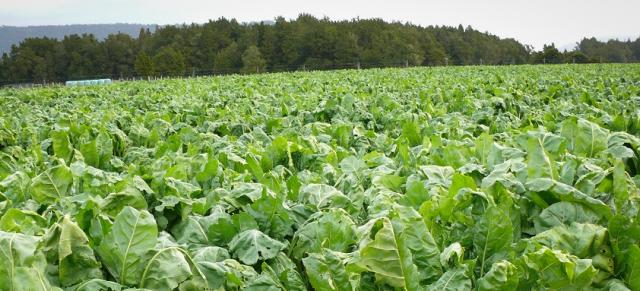Which paddocks will you be using for next year’s winter feed crops? To ensure the best environmental and animal welfare outcomes, B+LNZ has compiled a list of three critical factors to consider when selecting paddocks for growing winter feed crops.

1. Understand the risks of winter grazing
Winter grazing can increase the risk of sediment, harmful bacteria and nutrients ending up in water. Reducing this risk begins with paddock selection. Paddocks with water flowing through or over the soil present the most risk. For example: paddocks with sub soil drainage systems, paddocks on slopes or paddocks with stony free draining soils.
Once that you have identified that you have suitable paddocks to reduce the risks, you can think carefully about:
- establishment methods,
- crop type,
- how they will be grazed and
- what animals will be grazing them.
- It is also important to consider your catchment-specific water quality issues when selecting paddocks for winter feed crops.
In catchments where nitrogen leaching is a problem, be aware that growing and intensively grazing crops increases the risk of nitrogen leaching so avoid intensively winter grazing on shallow, stony soils.
In catchments where phosphorus and sediment loss are the main issue, focus on the proximity to waterways and reducing overland flow
If a paddock is too steep to get a tractor on, it is too steep for wintering cattle. We recommend you don’t crop paddocks or areas in paddocks steeper than 20 degrees.
To slow down water and soil moving down the hill you could, consider cultivating and sowing across the slope, this reduces nutrient and soil loss. However only when it is safe and practical to do so – do not attempt this when the slope is too steep.
2. Consider the risks in each paddock
Make sure winter feed crop paddocks are set right back from all waterways or wet areas, we recommend a buffer of at least 5 meters. This will reduce the risk of topsoil, phosphorus, nitrogen and fecal contaminants reaching water bodies. Identify Critical Source Areas (CSAs) which are areas that are prone to surface run-off and contaminant-loss such as gullies and swales. CSAs should ideally be left intact and not be sprayed, cultivated, sown in crop or grazed. They should be fenced off during grazing to reduce the risk of contaminating waterways.
Soil type can impact productivity, nutrient loss & animal welfare. If you have light or stony soils, seek advice on using catch crops to capture nutrients (following winter grazing). Consider only grazing lighter classes of stock on heavy soils during winter. Heavy soils are at greater risk of pugging, compaction and structural damage. If your soils are prone to pugging, consider leaving areas of the paddock in grass for animals to rest on.
Damage to soils from poor grazing management of winter crops will impact on the future productivity of that paddock.
Take note of local regulations, some regional councils have specific regulations in place.
3. Other factors to consider when selecting paddocks for winter forage crops
- What class of stock will you be grazing in that paddock? Consider using high risk paddocks only for wintering sheep while lower risk paddocks can be used for cattle and deer.
- Consider the aspect – is the paddock north or south facing? South facing paddocks may be slower to dry out and therefore more prone to pugging.
- Think about catch-crop options – the quicker a follow-up crop is established after the feed crop has been grazed, the less chance of losing valuable nutrients.
- Animal welfare factors: Is there appropriate shelter and somewhere free of mud for livestock to lie down.
- Is there drinking water in the paddock, where are the troughs, are portable troughs required?
- Is the paddock easily accessed – even in winter? Ideally supplementary feed should be put into the paddock prior to grazing to reduce heavy traffic on wet soils.
- Consider biosecurity: Ensure your stock – particularly cattle – don’t have nose-to-nose contact with your neighbor's animals.
- Make sure you adhere to all local regional council rules and regulations around winter grazing
- If you have no suitable paddocks on your property, you will need to have a look at your farming system. This might require a long-term vision until then, minimising risks would be key. Increasing buffer zones, using lighter stock classes, leaving higher residuals and using stand-off areas would be options to minimise risk.
Relevant resources
The following resources are relevant to all livestock farmers – dairy, beef, sheep and deer – who graze pasture or crops intensively over winter. If you would prefer face to face guidance on these or other environmental issues, you can attend one of B+LNZ's Forage Cropping or Farm Plan workshops. View the B+LNZ Events Calendar for upcoming dates.
- Top Tips for Winter Crop Paddock Selection (PDF, 321KB)
- Paddock Selection WoF (PDF, 193KB)
- Winter Forage Crops: management before grazing (PDF, 546KB)


